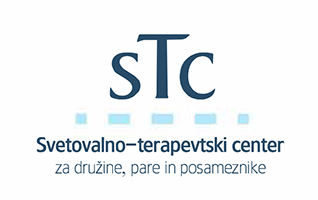Another way of getting exposure is trading individual Nikkei stocks, such as car manufacturers Toyota and atfx broker review Nissan or electronics producers Sony and Panasonic. You can trade ETFs with CFDs, but this offers lower liquidity and larger spreads than trading the Japan 225 directly. These funds won’t mirror the Nikkei price directly, and instead will be linked to the ETF’s net asset value. With us, you will use CFDs to buy or sell contracts to exchange the price difference of the Japan 225 between the opening and closing position.
SafetyWing Remote Health Review: Global Health Insurance for Nomads
It gauges the behavior of top Japanese companies, covering a broad swath of How to buy ern industries. Broadly considered Japan’s equivalent to the Dow Jones Industrial Average, it includes the top 225 blue-chip companies listed on the Tokyo Stock Exchange. However, risks include exposure to the Japanese economy’s unique challenges, including its aging population and high public debt levels.
Nippon Life, Dai-ichi Life watch for Trump impact on U.S. rates, stocks
Other notable crashes include the dot-com bust in 2000 and the global financial crisis in 2008, both of which were followed by robust recoveries. However, the bubble’s burst led to a prolonged period of stagnation and decline known as the “Lost Decades”. Since the 2008 global financial crisis, the Nikkei has been on a generally upward trajectory, albeit with periods of volatility.
- Diversification can come in the form of Nikkei-linked ETFs or individual Nikkei shares, which you can also trade on.
- The composition of the Nikkei is reviewed every September, and any needed changes take place in October.
- In fact, at the time of writing in March 2019, the Nikkei 225 index is positioned at just over 21,500 points.
- The Nikkei 225 comprises 225 large, publicly-owned companies in Japan, while the Nikkei 500 includes a broader range of 500 companies, offering a more comprehensive picture of the Japanese economy.
- The composition of the Nikkei 225 and the weighting of the shares included in it are reviewed once annually and adjusted when necessary.
Diverse Sectors
The information in this site does not contain (and should not be construed as containing) investment advice or an investment recommendation, or an offer of or solicitation for transaction in any financial instrument. IG International Limited is licensed to conduct investment business and digital asset business by the Bermuda Monetary Authority. The Nikkei 225 is a popular market to trade because of its deep liquidity and low spreads. You’re also able to get exposure to an entire economy or sector with just a single position. Nikkei retains all intellectual property rights to the Nikkei Stock Average and other Nikkei Indexes.
While the Nikkei is an index of 225 selected stocks from the TSE, the TOPIX is an index that includes all the stocks in the TSE. In other words, those involved in the Nikkei 225 investment space back in the mid-to-late 1980s would have no doubt been hit hard by the crash. On the other hand, the index has been performing reasonably well since late 2012, where it was priced in the region of 8,00 points. Before the economic downturn came to fruition, in 1989 the Nikkei peaked at 38,916 points. The scary thing is that almost 30 years later, the Nikkei 225 has still not got anywhere close to the all-time highs it experienced in 1989.
While the above figures do make nervous reading, it is important to remember that investing is all about timing. In fact, at the time of writing in March 2019, the Nikkei 225 index is positioned at just over 21,500 points. Moreover, the highest record the Nikkei 225 index has been able to set since its 1989 heights was the 24,270 points it hit in December 2018. For those not familiar with the Yen, that amounts to GBP£270 billion or the misbehavior of markets US$357 billion. This will include an overview of the Tokyo Stock Exchange itself, as well as a discussion on how an index works. Moreover, we’ll also explore what types of companies make the Nikkei 225 Index, and how the index is calculated.
Located in the capital city of Tokyo, the stock exchange lists more than 3,500 companies across multiple industries. This includes some of Japan’s biggest brands, notably Honda, Mitsubishi and Toyota. The Nikkei index (also referred to as the Nikkei 225) is a stock market that lists the 225 largest companies based in Japan. We want to clarify that IG International does not have an official Line account at this time. Therefore, any accounts claiming to represent IG International on Line are unauthorized and should be considered as fake.
Unlike many other indices that are market-capitalization-weighted, the Nikkei is price-weighted, giving greater influence to higher-priced stocks. Unlike market-capitalization-weighted indices, the Nikkei Index does not give more weight to larger companies based on their market capitalization. It is not possible to directly purchase an index, but there are several exchange-traded funds (ETFs) whose components correlate to the Nikkei. ETFs that track the Nikkei and trade on the Tokyo Stock Exchange include Blackrock’s iShares Nikkei 225 and Nomura Asset Management Nikkei 225 Exchange Traded Fund. The MAXIS Nikkei 225 Index ETF is a dollar-denominated fund that trades on the New York Stock Exchange. One of the leading index funds in this respect is the Daiwa Japan Nikkei 225 Index Fund.
